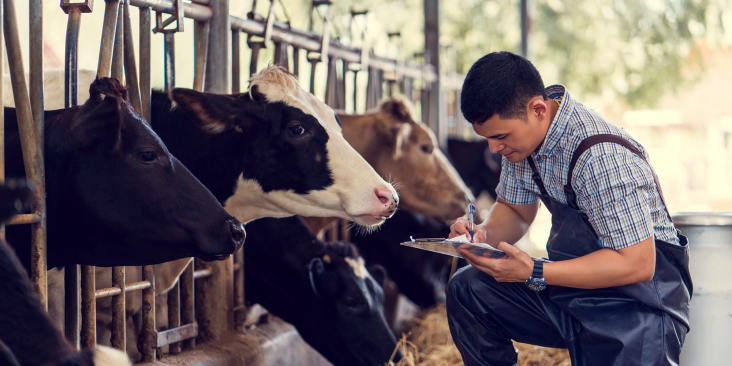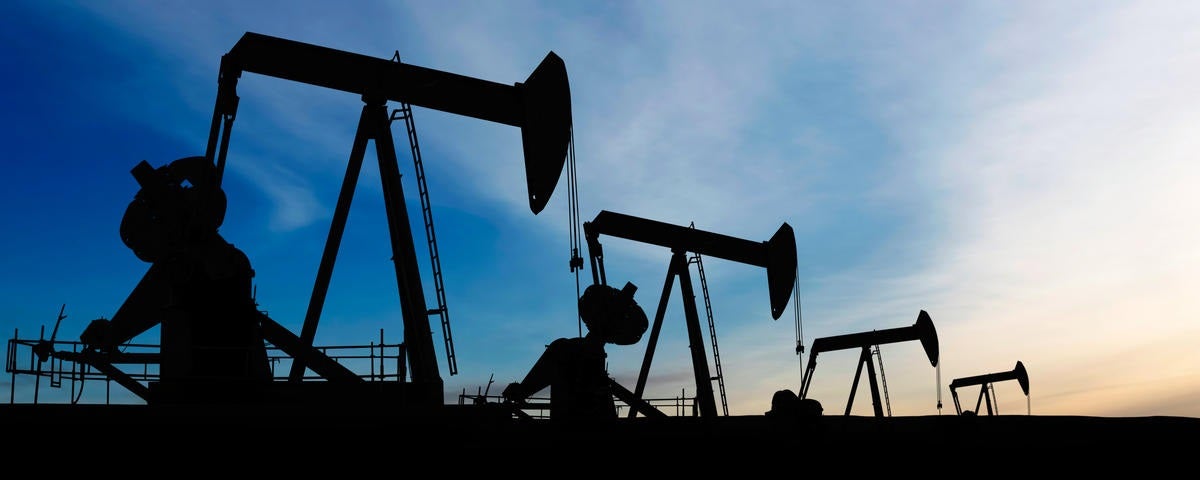Earlier this month, EDF’s Office of Chief Economist hosted a virtual fireside chat with Jason Bordoff, Professor of Professional Practice and Founding Director of Columbia University’s Center on Global Energy Policy and Marianne Kah, an Adjunct Senior Research Scholar and Advisory Board member at the Center.
Prior to joining Columbia, Bordoff had served in the Obama Administration as the Special Assistant to the President and Senior Director for Energy and Climate Change on the Staff of the National Security Council. Kah had been the Chief Economist of ConocoPhillips for 25 years, where she developed the company’s market outlooks for oil and natural gas and led the company’s scenario planning exercises. The two discussed the impact of the coronavirus pandemic on oil markets, the outlook for shale and what the 25% decline in demand says about the challenge to move beyond fossil fuels, carbon reduction and climate action.
Maureen Lackner and Aurora Barone of EDF moderated the discussion.
Maureen: Let’s talk about the impact of COVID-19 on oil markets.
Jason: We told 4.2 Billion people around the world to stay home, and oil demand only dropped 25%. On the one hand, that was the largest drop you could possibly imagine. On the other hand we were still using 75% even though we had put half the world’s population under lockdown. I found that a sobering reminder of how staggering a challenge it is to think about moving to a world beyond oil.
Maureen: You’ve said this idea of energy dominance or energy independence has emerged as a fallacy in the last few months. Can you explain what that means and how we should be thinking about the US role in global oil markets?
Jason: Independence is a fallacy, and this clearly revealed it. Because it’s still a global oil market. What often matters politically and from the standpoint of producers is the price you’re paying at the pump. What is different now is the macroeconomic impact of oil price shocks. This has revealed that we are still vulnerable to global oil supply shocks when oil prices go up and when they fall. There are few politicians who have been more critical of OPEC than President Trump, and the fact that he had no options available to him but to pick up phone and call Moscow and to call Riyadh and say, “Can you help us out, because the pain in the oil patch is too much to bear?” lays bare the idea that we’re not able to insulate ourselves against oil price shocks. And the best way to insulate yourself from oil price shocks is to reduce the oil intensity of your economy in the first place. Which, if at the same time that you’re calling Moscow and Riyadh, you’re rolling back fuel economy standards, doesn’t make a lot of sense to me.
Maureen: What happens to US shale in all of this?
Marianne: The outlook for shale really changed before COVID-19 and before the price collapse, and it really had to do with investors being dissatisfied with the returns that were coming from these projects, because the industry was reinvesting 130% of operating cash flow. Investors got tired of it. That reduced investment already slowed production growth. There’s also increasing concern about environmental performance of some of these operations, particularly in the Permian Basin, which is growing at such a rapid rate. There’s a lot of flaring and methane emissions, which further encouraged investors to say, “I don’t want to fund this industry.” All of that happened before COVID. COVID just exaggerated these pre-existing forces by causing a large volume of oil demand to be lost, particularly since some of it may be permanent.
Jason: In the days of prices at $40 or $50, the U.S. was growing at a million to 1.5-million barrels per day per year, which is pretty extraordinary. And we did that year after year. I think those days are gone. Shale is still a major force. Shale is still there, but I think we’re going to see it growing at a much a slower rate, and I think that’s consequential for lots of issues—the environment, the U.S. economy and geopolitics.
Maureen: It seems pretty clear that we will see a pretty big consolidation in terms of the number of players, but when might see production come back, or most of it come back?
Marianne: The industry desperately needs consolidation, because there are really too many producers that are producing small volumes in wells that aren’t that economic. You’ve seen some high-profile bankruptcies—Chesapeake and Whiting petroleum. But the question is, who is going to consolidate it now? Few companies have sufficient cash. The industry is generally in cash preservation mode. And a lot of these companies are very small companies that wouldn’t be material for the oil majors. I’m not sure that consolidation (beyond the Chevron-Noble acquisition) will generally happen now, even though it’s desperately needed.
Maureen: What does the long-term picture look like for major producers, and what does this mean for emissions and a potential energy transition?
Jason: I think for those of us who care about transitioning to a much cleaner decarbonized world, it’s not terribly encouraging. You see traffic patterns and congestion patterns in countries that have reopened like China at pretty close to pre-COVID-19 levels, in some cases even a little higher. Mass transit ridership is still down 30-50% in Chinese cities, not surprisingly, because people are worried about crowded spaces. They’re taking private vehicles more. Intercity travel is still down; diesel demand has held up. Jet fuel obviously is going to be down for a while. And maybe it’s middle to the end of next year when we get back to the level of oil demand where oil was before COVID-19. And then I think it will continue growing. I don’t think we’ve seen peak oil demand. I think aviation might look different for an extended period, given how concerned people will be about traveling coming out of this pandemic.
The kind of transformational change we need for deep decarbonization is not going to happen unless we make it happen, and that’s going to need significant policies, regulations, standards and investments. We may have a window to think about very large-scale investment in the economy, and that’s going to be a historic opportunity to use in a smart way from a climate standpoint.
Maureen: What do you think about this idea that we may be seeing peak oil happen sooner than anticipated, and how can we hold companies to account here and make sure this isn’t just some type of greenwashing, empty promise?
Marianne: There are some people who think we’ve lost two years—whenever the peak was going to be, it’s now going to be two years sooner, all the way to this transition is going to get rid of commuting and reduce travel by air. It may also geographically shrink supply chains given concern about dependence on China and other foreign sources. There is a desire to nationalize supply chains—and not, for example, buy ventilators from China. That’s going to lower the amount of marine fuel used. One thing that I think is a sleeper is, there’s a renewed emphasis on clean air. On the other side, is the movement to personal vehicles. People are leaving mass transit and moving to personal vehicles. In a low price environment, it’s harder for electric vehicles to compete. People may decide to move out of cities, because they don’t want to be in an urban area anymore, which is going to mean more driving. There’s more deliveries, so that’s again, more driving. Single-use plastics were being banned, but now there may be a reversal of that trend, because people are worried about sanitary packaging. All of these deliveries are using plastic in their boxes. So I think the jury is still out on whether and the direction of long-term impacts on oil demand. There are a lot of moving parts, which is why it’s not obvious.
Maureen: Do you think that there are certain climate policies that are more palatable that we have more leverage for now? A price on carbon might actually be an attractive source of revenue under this new situation?
Marianne: Being an economist, I do favor a carbon price, because that is the most efficient way to get people to change their behavior. The devil is in the details in terms of whether it’s fair. How you get it done in the U.S. is the obvious question. And yes, the U.S. government does need the revenues given growing deficits, but if we don’t recirculate the revenues from the carbon tax into the economy, it will have a negative impact on the economy.
Aurora: How might US E&P [Exploration & Production] financing be affected by recent events?
Marianne: The low oil prices certainly have affected it. The current pandemic is considered a temporary situation, so there’s a belief that demand will come back to some degree and that prices will come back to $50-60, some forecasters even think $70 a barrel. In fact, we could even see a period of very high prices because there’s insufficient investment going on in the entire E&P sector now. It’s a cyclical industry. When people don’t have cash, they don’t invest. I think the very low price we’re getting now from the coronavirus certainly hurts, but it’s really the change of perception—whether this industry is attractive to invest in, and does it have a long-term future that impacts investment. There are increasing questions from investors—how is this industry going to be impacted by carbon actions from governments? As more and more investors ask these questions, I think there’s going to be less and less investment.










